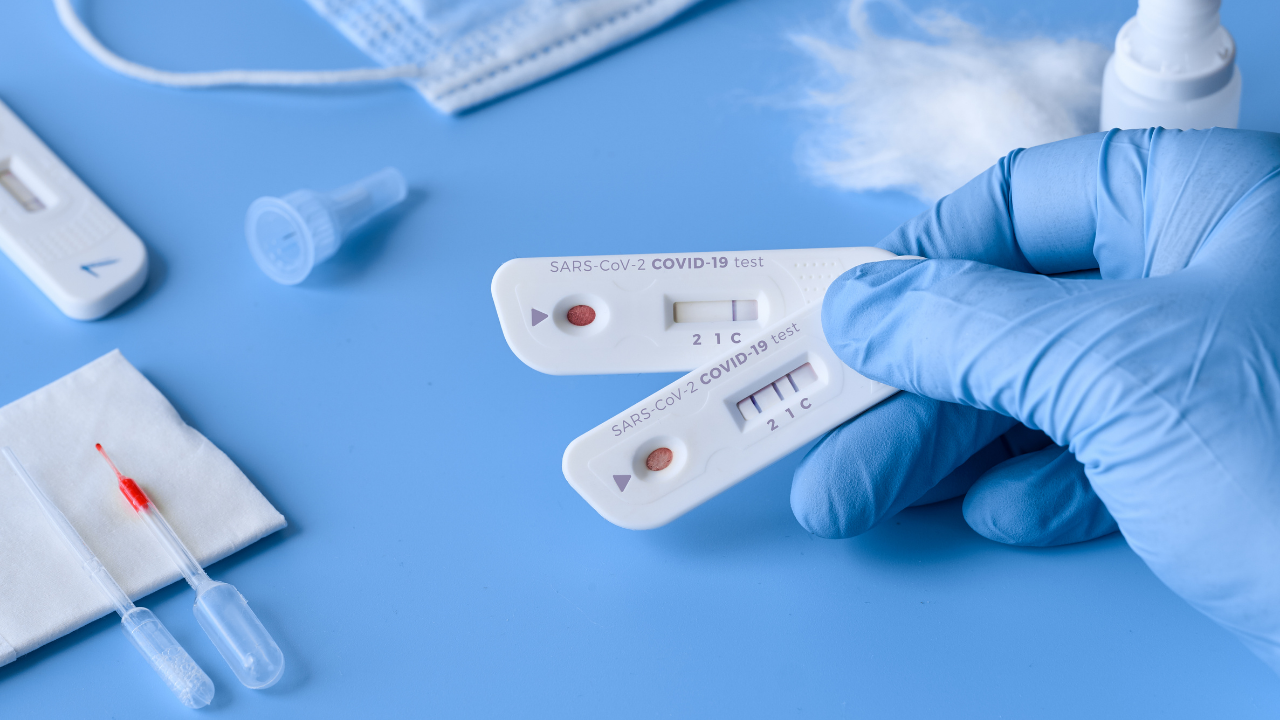
COVID-19 test kits (NQUIRER.net file photo)
With more areas in the country reporting cases of the more transmissible BA.2.212.1 Omicron subvariant, an infectious diseases expert on Thursday warned of a possible slight spike in COVID-19 infections.
But according to Dr. Rontgene Solante, he does not see an increase in the hospitalization rate, one of the factors the government considers before deciding to impose lockdowns.
“Our expectations here is that the cases will increase, especially in those areas where vaccination rate is low. What’s important here is that we know that this [Omicron] sublineage has a very high transmissibility. So our population is vulnerable, especially the unvaccinated,” he said at the Laging Handa public briefing.
Better prepared now
Solante added that the country’s cases might rise to over 500 a day should the transmission of the subvariant occur in regions with low vaccination coverage.
“So there is a possibility—a big possibility there—that the cases might rise a bit, but I don’t think it will be enough to affect our hospitalization rate,” he said.
He added that the subvariant, though highly transmissible, might not cause more severe illness for the general population although the vulnerable population could “most likely” need hospitalization if they get sick. However, he was optimistic, saying the country’s hospital system was better prepared this time, having learned from the difficulties posed by the Delta variant surge where mortality was high.
Solante, aside from being a member of the government’s vaccine expert panel, is also chair of the adult infectious diseases and tropical medicine station at San Lazaro Hospital in Manila and former president of the Philippine Society for the Microbiology and Infectious Diseases.
According to him, experts are observing if there will be an uptick in cases by the beginning of the second week after the May 9 elections.
Monitoring to continue
After the detection of the Omicron subvariant, monitoring will continue all the way up to June. If a community transmission is confirmed, it will be verified by the higher number of cases.
Solante said that experts were also monitoring areas in Metro Manila where an uptick of cases had been reported.
He underscored the importance of testing more people and at a faster rate to track the progress of the subvariant’s transmission.
“If we don’t have enough testing, then we don’t know how many of those really are infected. The fact that the subvariant is here now—even if we look at the old variant which is Omicron, which is still highly transmissible—there is more reason to believe [that cases] could rise because of those superspreader events for the past days. Plus, the fact that our immunity is waning, we’re looking at it [because] it is one of the factors that can contribute also to the increase in cases,” he said.
He advised people to continue complying with health protocols such as wearing face masks in crowded areas, avoiding poorly ventilated rooms, and washing their hands.
Getting booster shots would also provide additional protection for the fully vaccinated, he added.
Presidential Adviser for Entrepreneurship Joey Concepcion, meanwhile, urged the government to approve second booster shots for those aged 50 and above, in addition to health workers and senior citizens.
“There are members of our population who are economically productive who are not covered by the current second booster guidelines, and these are the 50 years old and older,” he said in a statement on Thursday.
Concepcion cited the insights given by medical experts during a meeting organized by Go Negosyo with the private sector on May 16, including that of public health expert Dr. Tony Leachon.
Main concern
“Variants will come and go, but the main concern is productivity,” Leachon had said, explaining that although COVID-19 infections might not be severe enough to require hospitalization, these still would result in lost productivity because patients need to isolate.
Increased infections have also raised concerns about the effects of long COVID or post-COVID conditions—marked by a variety of symptoms, including shortness of breath, fever, fatigue, headaches and other neurological disorders.
These can last for months or longer, and little is known on how the different variants and subvariants affect the probability and severity of long COVID symptoms.
OCTA Research fellow Dr. Michael Tee, who is also a rheumatologist, echoed a similar concern, saying that although vaccines work even with variants, 20 percent to 40 percent of patients would likely experience prolonged muscle and joint pain, affecting their productivity. —WITH A REPORT FROM ROY STEPHEN C. CANIVEL
READ: Omicron community transmission in Metro Manila confirmed – DOH